-
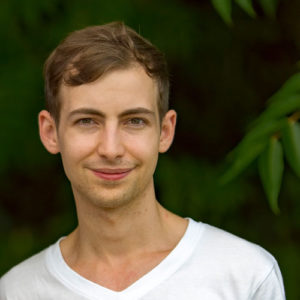
TAMÁS ÁBEL
GLASS ARTIST
“The leading motif of my geometric works are the colors of the rainbow paired with the concept of equality, tolerance and harmony. The color and light phenomenon bind in glass or mirrors does not only get transformed from a material point of view, but it also moves away from its original meaning in a mental way. My aim is to shift the viewer both spatially and mentally. The openness that the world and society lacks is realized in the space made endless by the mirrors.”
-
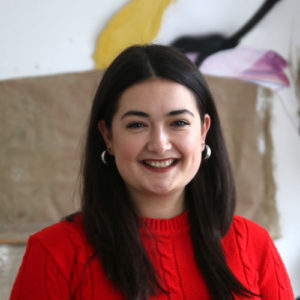
NIKOLETT BALÁZS
VISUAL ARTIST
“I create installations that constantly revive my direct, sensual relationship with materials, my peripheral visual heritage, or my unique experience of natural landscapes. In one of my works I used a piece of leftover PU foam from a construction site as an element of the picture; in another one, I sew the canvas with my mother’s sewing machine. I have glued a piece of weed onto one of my pieces in a way that reminds me of my long forgotten, rich coat of body hair. I am talking about current social impressions while also telling a personal story on the border of figural and abstract art, getting closer to my own nature, my conscious and unconscious memories.”
-
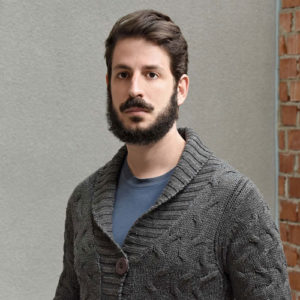
MÁTÉ DIÓSI
PHOTOGRAPHER
“I work both with digital and analogue techniques as well as everything in between. In my works I often deal with social problems that go beyond me, reflecting on the local and global scene around me. Furthermore, I am also interested in studying photography as a medium. It is very important for me to approach my works with a researcher’s attitude which often manifests itself in the erosion of the technical image. I pay special attention to the questions regarding the extent to which photography can be referred to as a sign - an index. Where is the border between reality and fiction? Can reality be even interpreted as a concept within the frame of this medium? My creative process is characterized by the fact that I personally execute all of the manual tasks from developing the film to producing the blow-ups and framing the pictures.”
-
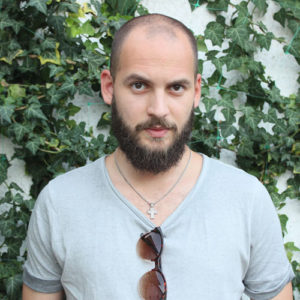
GERGŐ FÜLÖP
VISUAL ARTIST
“I deal with the psychology of existing in the present situation. Defining certainties becomes unreliable and futile, while a number of parallel, but often conflicting realities develop. I cannot state anything for sure; uncertainty spreads to all fields of life. My works are characterized by a Baroque attitude which is manifested in magnifying my subjects as well as the tension arising from the contradiction between a thought and how it is displayed. I use the internet as my pattern book.”
-
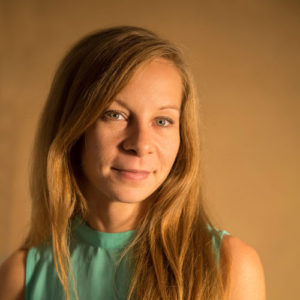
ANDREA GOMBOS
SCULPTOR
“My creative process is characterized by the fact that I work on multiple pieces simultaneously. They get their final shape by interacting with each other. Based on the experience and revelations gained during a technical or material experiment I sometimes go back to my old pieces and develop them further. In my current works, thinking about the existence, the role and the opportunities of the individual as well as about the predestined and determined nature of everyday life shaped by various events and natural cycles, has a central role.”
-

ÁGNES HORVÁTH
VISUAL ARTIST
“I was steered towards the Moholy-Nagy University of Art and Design by my instinctive attention to the relationship between the appearance and the functioning of things. Their designer course had a profound effect on my views. In my fine art pieces this is reflected by the fact that I focus on the concept instead of the visual characteristics; my works form a coherent group based not on their appearance, rather the approach behind them. I primarily focus on issues which can be expressed by juxtaposing opposites. My generation is the first to experience the effects of social media on the mechanisms of our private and public lives. I examine the contradictions between universal and unique, visible and hidden, serious and frivolous, instantaneous and eternal through my works in this context.”
-
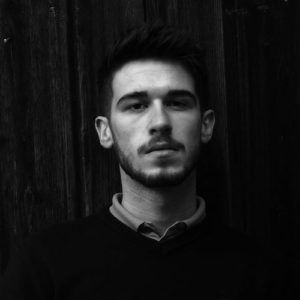
ADRIÁN KLÁJÓ
VISUAL ARTIST
“My works have complex and multidirectional linguistic and stylistic relationships. Sometimes they are reminiscent of the object hoarding of New Realism, while in other cases they are closer to the poetry of arte povera, the impoverished art. The objects are usually bare and raw; I avoid exaggerated artificial intervention. The use of materials is rather minimalist. Although the objects that I use are ready-mades, they are more than that, since they do not really find their purpose and make up a complete unit on their own, but rather arranged into groups. Essentially, I am recycling. By talking about living on the edge, about decay, and the futile elemental struggIe, I try to capture the essence, the materiality of the dusty and muddy stillness of the Alföld (the Great Plain of Hungary) while constantly searching for new ways of expression.”
-
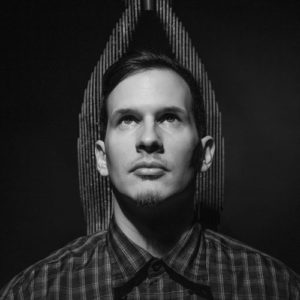
ÁRON MAJOROS
SCULPTOR
“My sculptures form a unique bridge between classic archaic thinking about plasticity and the modern-day approach towards visuality and space which is based on layers. I interpret the expression of my works with new materials and tools; I further enrich the intensity of plastic effects with colors, light, and even the effects of projection. My sculptures, which are mostly transparent and sometimes form a closed composition, are shaped like unidentifiable, faceless figures: the prototypes of ‘mass people’, a kind of standardized humans. Through giving a form to the body and its absence, and through searching for authentic ways of displaying the human figure I am actually looking for the soul.”
-

TÜNDE MÉZES
VISUAL ARTIST
“I am currently dealing with the issue of artistic expropriation, which I regard as recycling. I do not want to create an original work of art by creating a new style or sign, rather I choose from a pile of accumulated pieces of art and everyday items, and even reproduce them. Thus, I create new meaning without creating a new visual element. Furthermore, by creating a history for the known or only seen objects through repeating or copying them, the new work carries the memory and the history of these objects within itself. In my new series entitled ‘Recycled content’ I make watercolor copies of the landscape images used on the labels of bottled mineral water. With this gesture I am referring to the fact that the ‘untouched landscape’ seen on the picture do not exist anymore, since plastic waste has reached even the farthest and seemingly untouched corners of the Earth. By removing the brand name from the logo, I return the picture of a cleaned landscape."
-

TAMÁS MIKOLA
VISUAL ARTIST
“There are numerous situations in which we are not quite sure of the right decision - therefore, we rely on the reactions of the people around us to decide. In ambiguous situations our actions resemble those of the group that surrounds us. In my works, I try to draw conclusions from these similarities and differences: the scenes, translated thus, are populated with faceless or masked figures who are searching for ways of freeing themselves from their ego in social interactions since it only holds them back. In these scenes I like to use elements, especially masks and totems from other cultures, mostly tribal communities. The masks or totems are representing taboos and superstitions, while the people and the faces are the carriers of them. At first, I mainly created graphic works, but nowadays I make installations and carvings as well.”
-
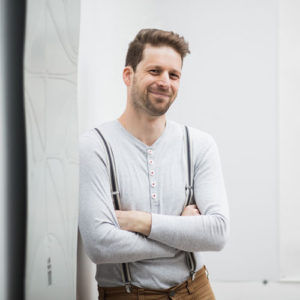
MARCELL NÉMETH
SCULPTOR
“My reliefs depict emptied out spaces and landscapes which reflect a worldview shaped by human hands. I strip the spaces of details and concentrate their essence on the plate. I want to create the largest space that can be captured by the human eye and memory with the least amount of plasticity. Through the lack of connection, attachment and personality I show the loneliness of occasionally crowded in-between spaces. Perhaps only for a few moments, but I focus on thoughts that are primarily averted from us by ourselves. Through the emptiness of insertability I search for what is hidden in the viewer.”
-
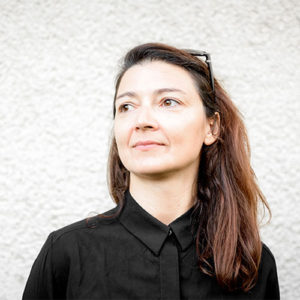
KATJA PÁL
PAINTER
“I often describe myself as an old-fashioned painter whose practice rather turns inward, questioning the nature of painting. The theme of my works can primarily be understood through the answers given to the question of ‘what is happening when you are looking at a painting?’ - that is, they explore the vitality of the relationship between the painting and the viewer. I try to create paintings that confront my viewers with the usual "visual passivity", and where the routine object observation does not produce satisfactory results. The structure of the piece is also adapted to this playfulness. I often used a shaped base, or I make flexible compositions consisting of several separate (square) sheets and layers that allow the viewer to slide or rotate the elements individually, thus following the different phases of the motif.”
